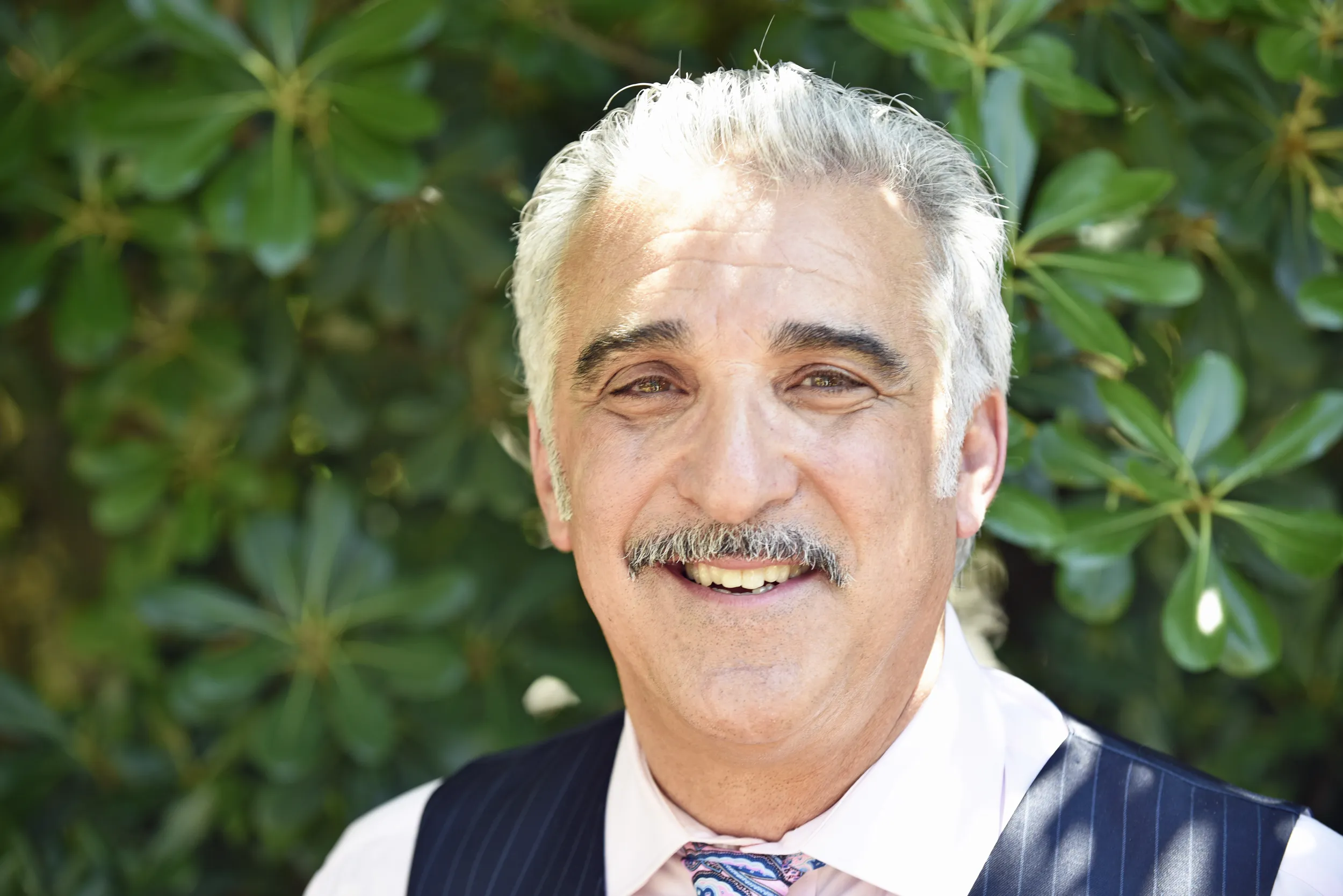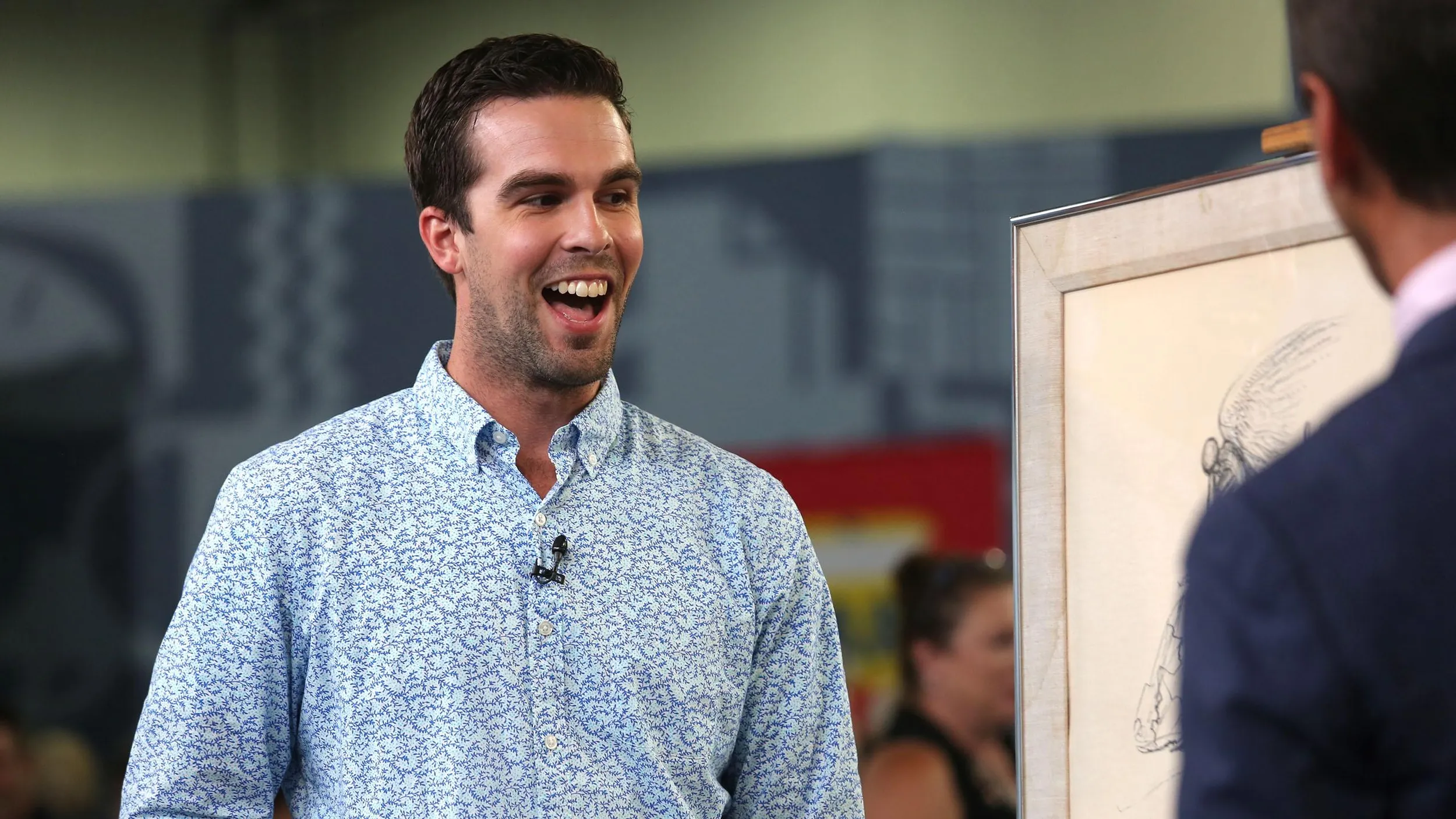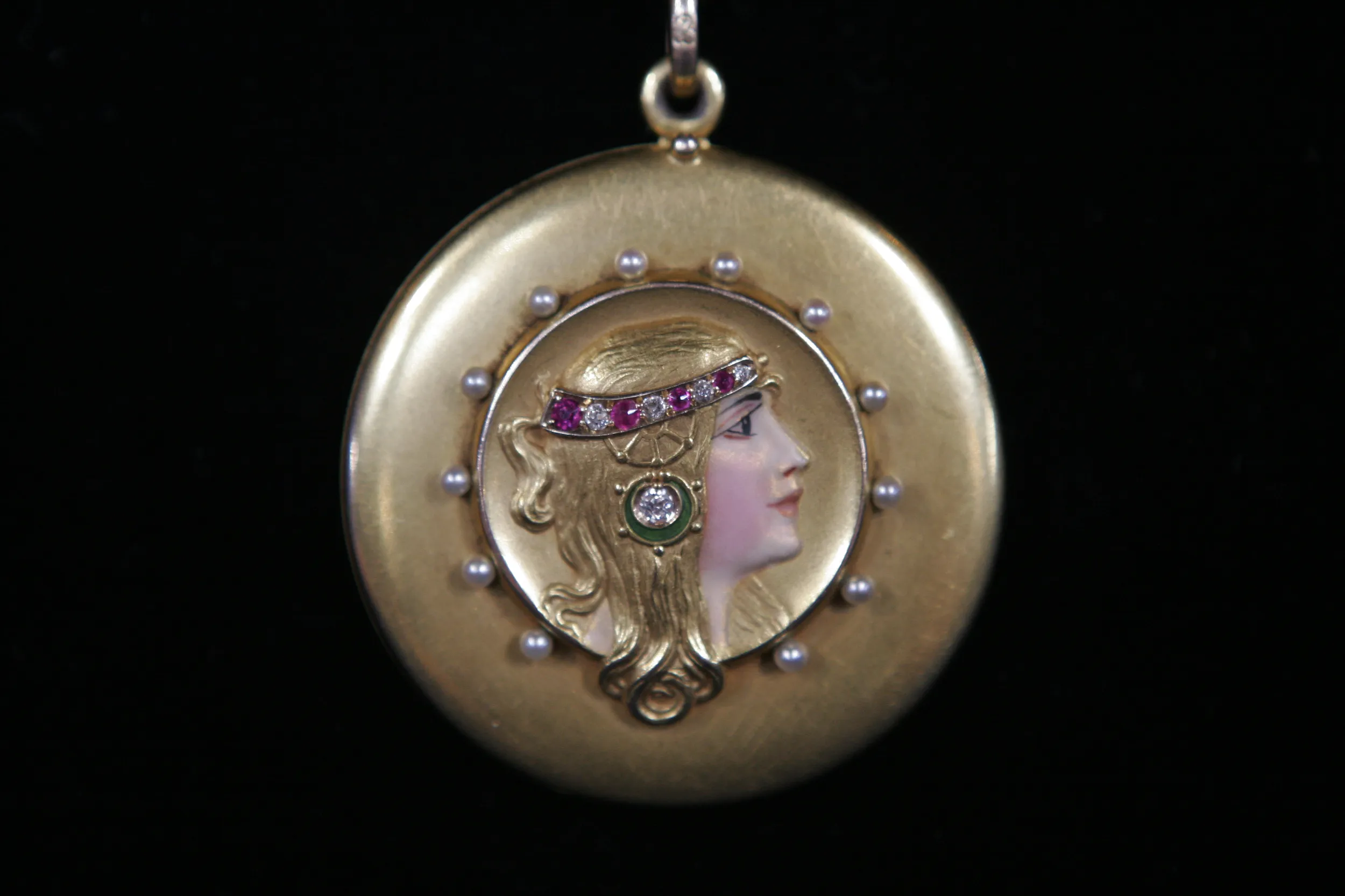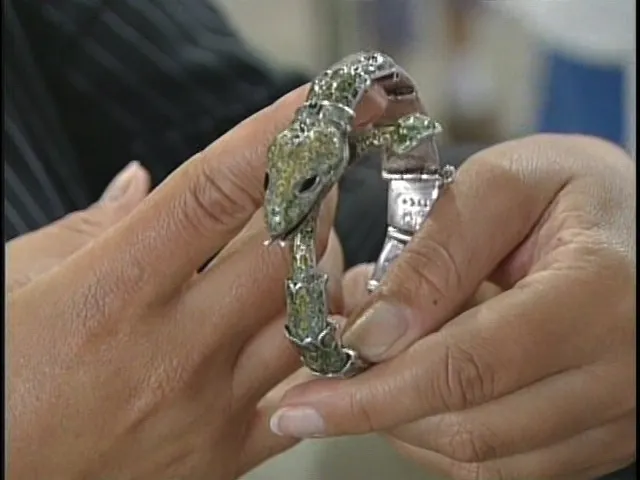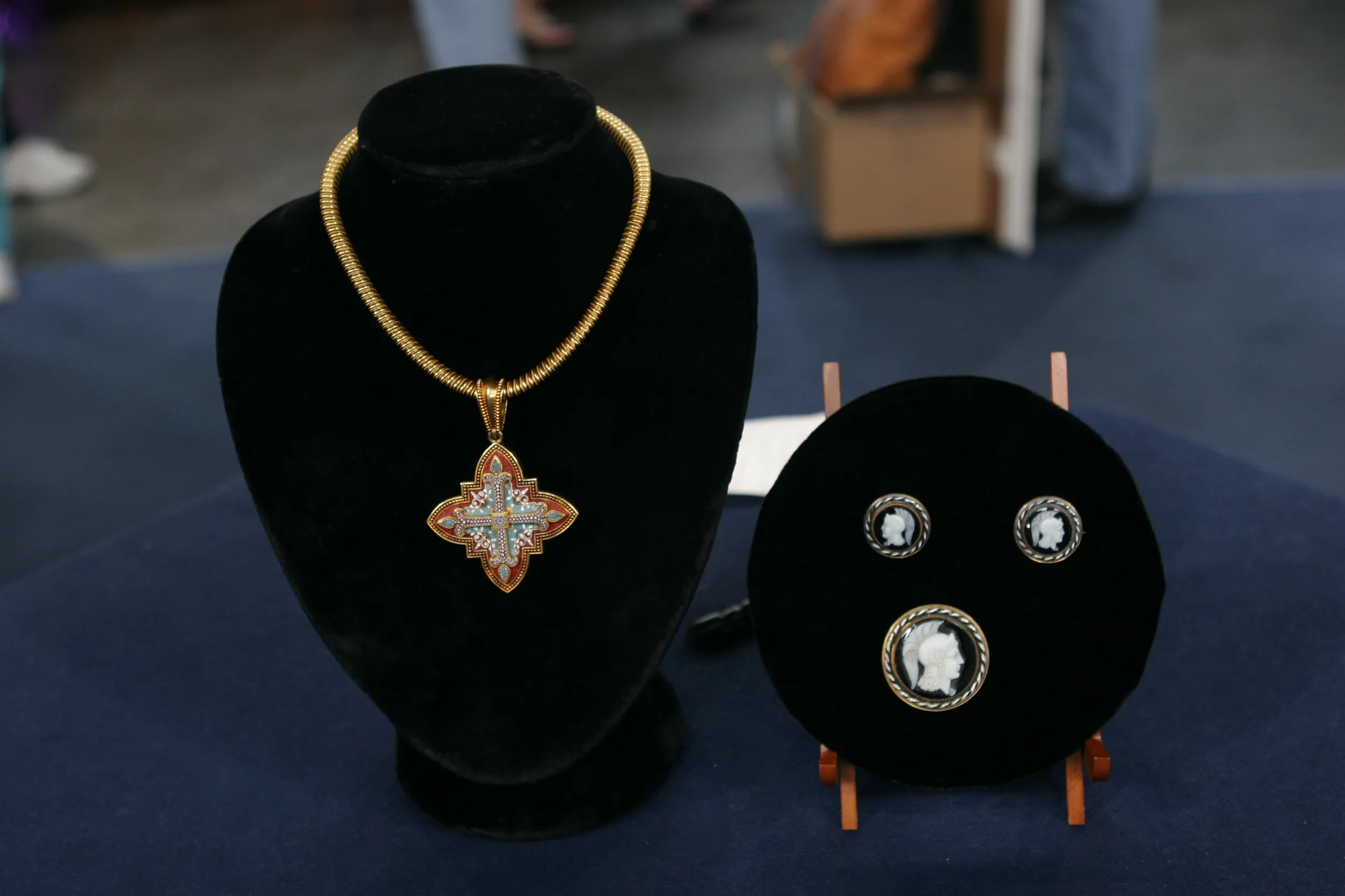GUEST: I inherited it from a woman I worked for back in the '80s when I was in the movie business, and her name was Mary Lazar. And she was married to a guy who was considered to be the first super agent, Irving "Swifty" Lazar. And she died prematurely, sad to say, in the early '90s, and she left this item to me. And I see it as representing the goddess Juno. And it is Lalique, or allegedly Lalique.
APPRAISER: Ah!
GUEST: Some years ago, I sent images of this to Lalique, wondering about it, and wondering if I should have it in a safe deposit box, or insure it for a lot or whatever. They told me that they couldn't be certain that it was authentic. And they told me that I had to go get it authenticated, and I just never got around to it.
APPRAISER: It's a big process to authenticate jewelry with certain manufacturers today. And it's a long and arduous process, sometimes it's very expensive. Some of them don't do it anymore. Let's talk about the necklace cause we don't know if it really is Lalique or it isn't yet.
GUEST: Mm-mm, I don't.
APPRAISER: René Jules Lalique, I mean he was a fabulous technician and jeweler. But, gosh, across the board, so many different things. This guy was designing ornaments for the hoods of automobiles, fabulous glass art, jewelry, perfume bottles. He was involved with all the great expositions in Paris. So, truly a master craftsman. Even worked with some great houses, such as-- and there's many more than I'm going to mention-- but Cartier, Boucheron.
GUEST: Wow.
APPRAISER: Yeah, I mean really got his feet wet. It's clearly Art Nouveau. I feel the period's probably near the latter end, 1910.
GUEST: Mm-hmm.
APPRAISER: I love this on its own for the simplicity of it. I have noticed, right over here, there's a past repair.
GUEST: Oh! Really?
APPRAISER: It's tiny.
GUEST: Oh wow.
APPRAISER: And when they repaired it, they used a lower karat solder.
GUEST: I'll be darned.
APPRAISER: And there's some porosity marks there. They didn't do any damage, and it's the kind of thing that it could be reversed. And with technology today, you could use things such as a laser welder.
GUEST: Yeah?
APPRAISER: And correct that and make it right. You got these drops here.
GUEST: Yes.
APPRAISER: I think you thought they were...
GUEST: Topaz.
APPRAISER: I would've loved them to be topaz, sometimes they are. They're citrines.
GUEST: Really?
APPRAISER: Listen. It's still good, trust me.
GUEST: Oh, okay. (laughs)
APPRAISER: Now citrines come in varying hues and colors.
GUEST: Wow.
APPRAISER: Here's the signature right here. Not hand-engraved, stamped.
GUEST: Oh, okay.
APPRAISER: Very simple block letters, straight up and down font. With my opinion, and the people I've talked to here, my colleagues, we feel this is Lalique.
GUEST: Oh good.
APPRAISER: All right? I'm not saying you don't have to continue your journey getting it authenticated.
GUEST: Right, right.
APPRAISER: Now a lot of people were wondering why is this enamel on the back?
GUEST: Yeah. I wondered that myself, yeah.
APPRAISER: They would enamel the back to create strength. This piece is repousse, hammered from the back to create the relief on the front. It's 18-karat yellow gold, weighs about an ounce and a half.
GUEST: Okay.
APPRAISER: If I had to put a value on this today, at auction, realistically $4,000 to $6,000.
GUEST: Well, that's a nice amount. I would never part with it. My daughter will have it one day.
